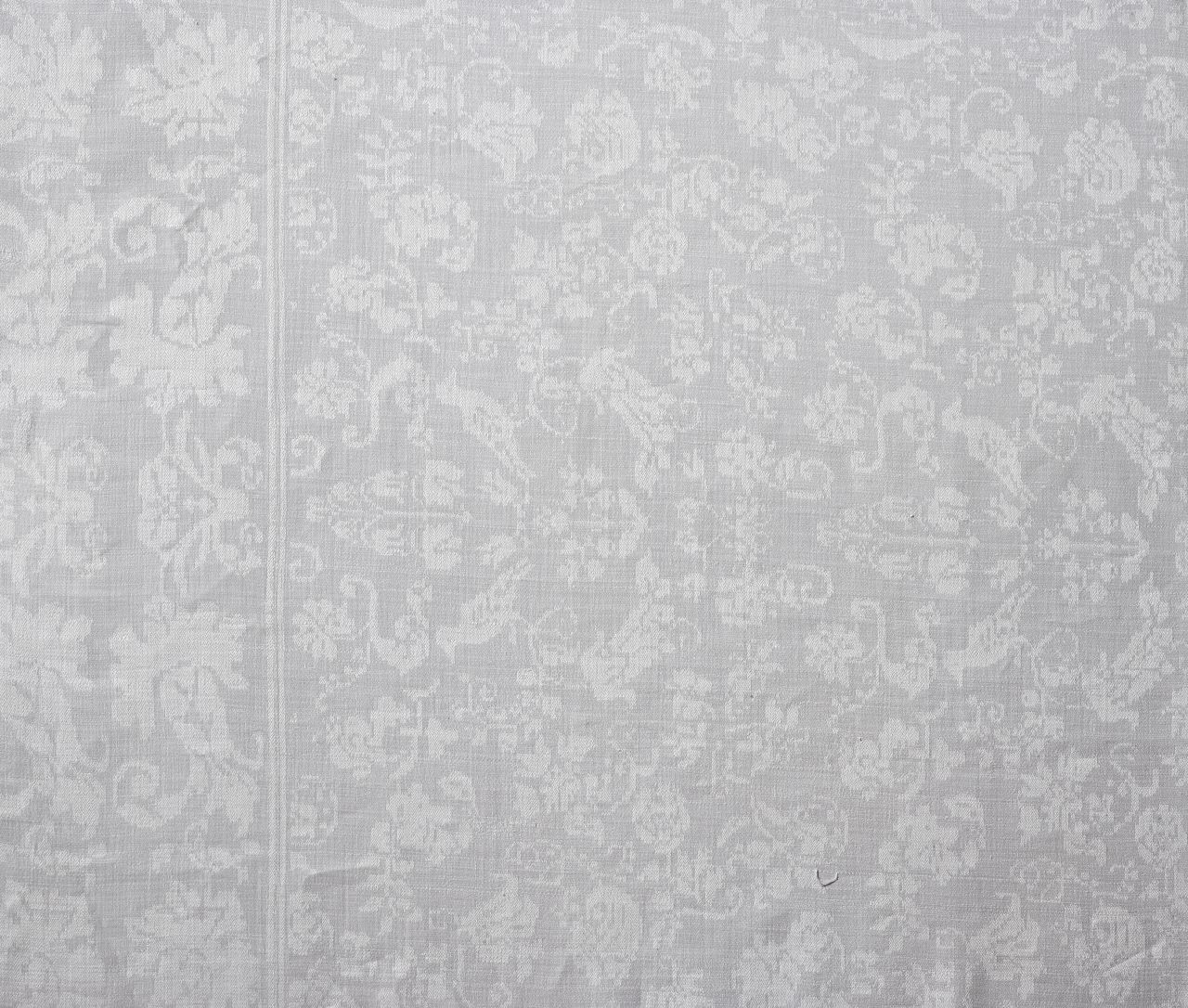Im Museum sind vier Teile des frühen – wohl Großschönauer – Tafeltuchs erhalten. Das Zentrum der Fragmente, die zusammen das Mittelfeld bildeten, ziert ein Flächendekor aus verschiedenen pflanzlichen Motiven. Auch die Bordüre schmückt ein florales Dekor. Das Monogramm »CHK 1716« dient als terminus ante quem – es erlaubt den Schluss, dass das Tuch 1716 oder früher entstanden ist. Blüten und Pflanzen waren – je nach Mode und Geschmack unterschiedlich gestaltet – über alle Zeiten hinweg eine beliebte Zierde für Tafelwäsche. Im Naturstudium gewonnene florale Motive machen daher den größten Teil der Großschönauer Damast-Muster aus.
Gewebt: 1716 oder früher
en

